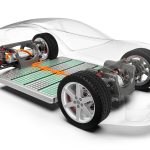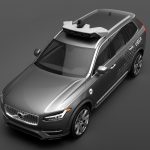It's Easier Here.
Leith Cars Blog
In case you haven’t heard, the auto industry is exploring ways for cars to drive themselves, and progress is being made.
Members of the auto industry met with Congress with last week to talk about drafting laws for actually making this work in reality.
New research from private college MIT shows that when cars can talk to one another, things like traffic lights become unnecessary.
That’s because traffic lights are a way for people-driven cars to figure out who’s going to go and when. It’s like having a traffic cop who never gets tired and never needs a break.
It would take a lot of traffic cops to staff every intersection in America, which is why we developed traffic lights. Traffic lights are just computerized replacements for traffic cops.
But what happens if we take the technology that operates traffic lights and put it in cars? There are already computers in cars, but they only control things within the car itself (engine, sound system, rear-view camera, etc.)
Tech companies think there’s a better way. If you let cars communicate with one another, they can see where everyone is, and avoid collisions.
This is the technology behind automatic braking, blind-spot monitoring, and even the sensors that beep as you back up and get close to something.
You know how word problems from school textbooks are always asking if object A departed from location x at such-and-such speed, and if object B departed from location y at such-and-such speed, and objects A and B are headed toward each other, then what time will they meet?
That’s the math behind an intersection. It’s just math. If every car had a computer calculating the math of every other car around it, then they could figure out the optimal way for every car to get through the intersection without stopping. Ever.
It’s like when you see a flock of birds flying together. How do they all move in unison without anyone knocking into each other? If people in cars tried to do that, there’d be fender benders and angry words exchanged in a heartbeat. And yet the birds coordinate in unison.
That’s what self-driving cars are about. And if this research from MIT is any indication, we’re one step closer to getting there.
More from my site








